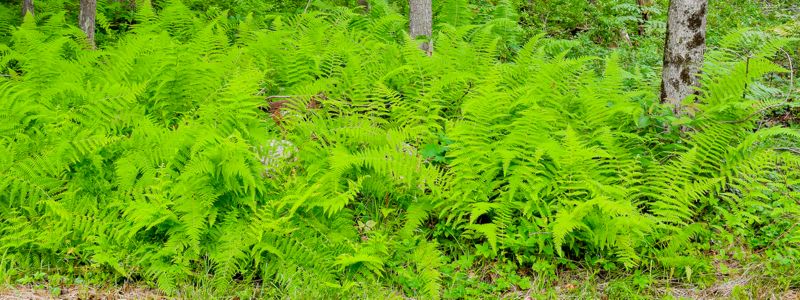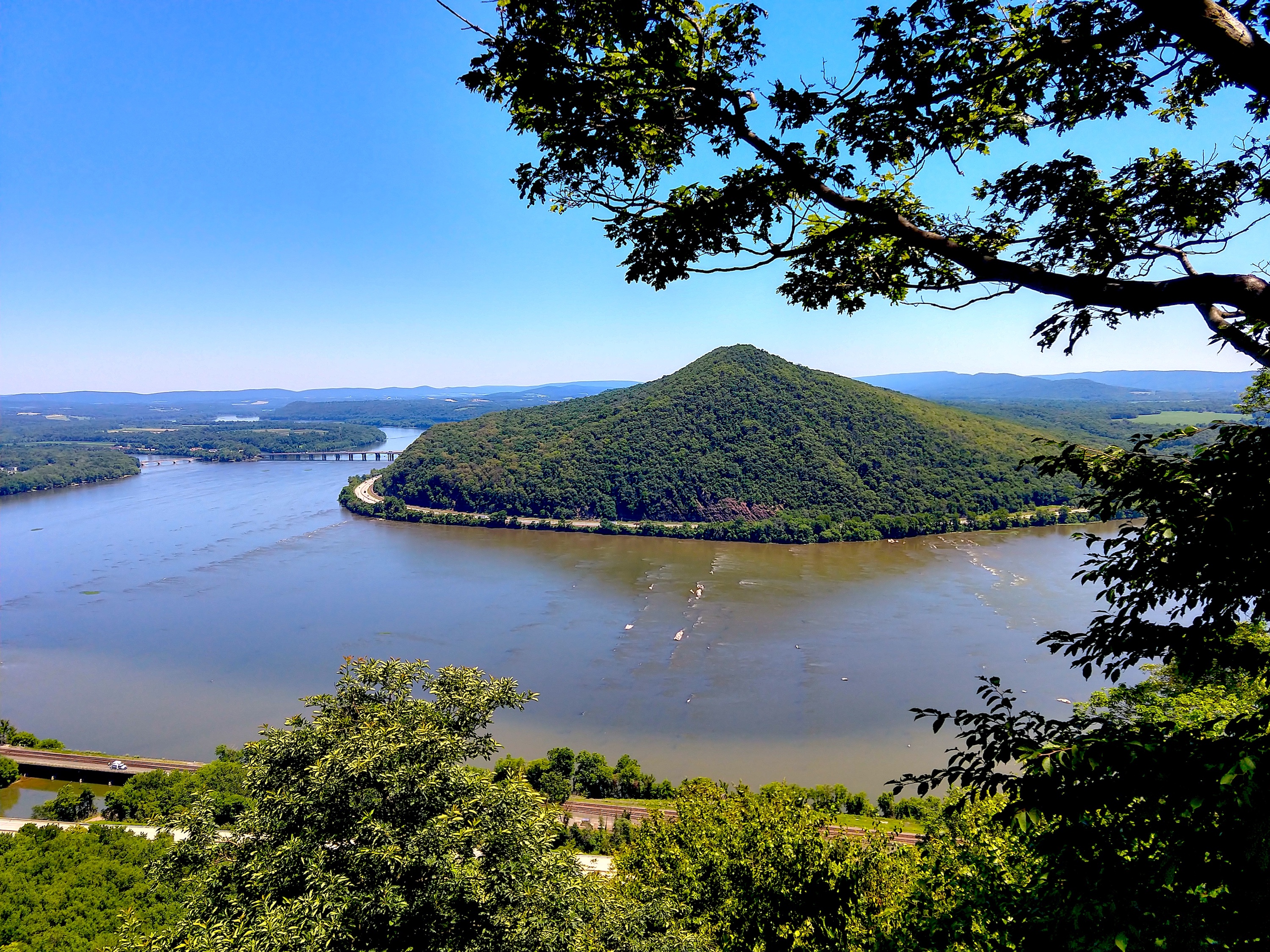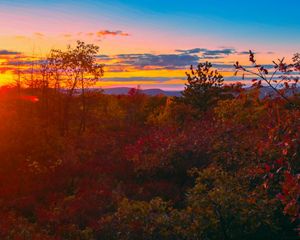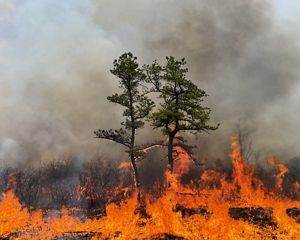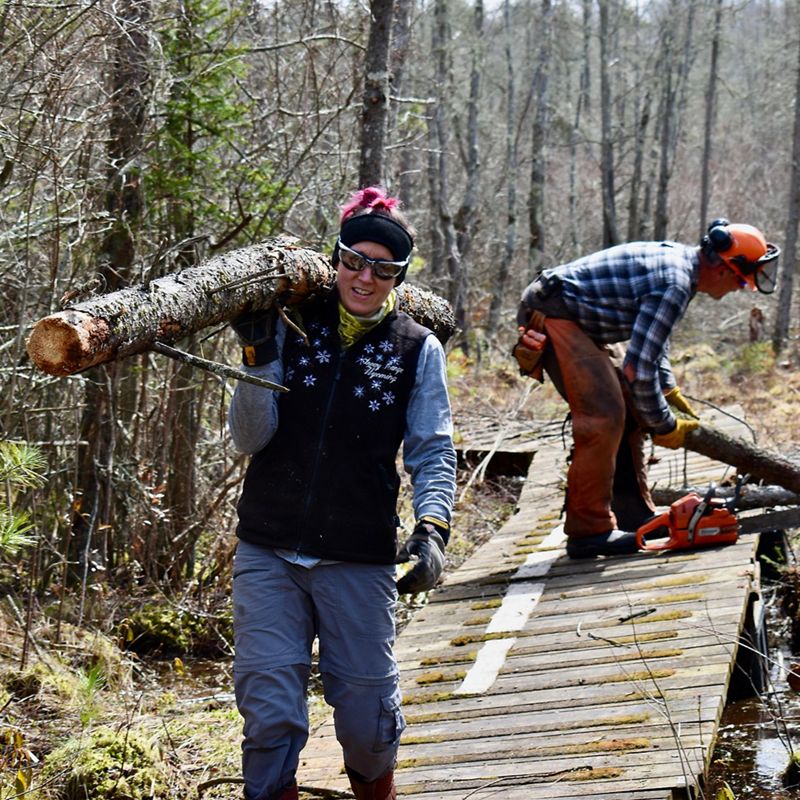
What Does It Mean to Steward Land and Manage for Resiliency?
Successful conservation requires science-based management and stewardship. Learn how we’re ensuring a healthy future for Pennsylvania's lands.
The Nature Conservancy (TNC) has been acquiring and protecting more than 100,000 acres of land across Pennsylvania since 1956 and leading large-scale conservation efforts that protect the lands and waters critical to the health and well-being of both people and nature.
When TNC acquires a parcel of land, we commit both legally and ethically to steward that land in perpetuity. Whether we’re planting trees to restore forests, conducting controlled burns to ensure vibrant grasslands, or working with volunteers to build new hiking trails, we consider the impacts our choices will have on wildlife, local communities and the people who visit our preserves.
Our stewardship actions not only enhance the visitor experience but ensure our preserves stay resilient in the face of a changing climate.
Our Stewardship & Management Goals
We're working with business, government, nonprofit and community partners to ensure a healthy future for Pennsylvania’s lands.
Our Work
To achieve our stewardship and management goals, we focus on three critical pillars: Protection, Restoration and Collaboration.
Protection
We are prioritizing landscapes strategically and investing in lands/opportunities that provide the maximum contribution to our mission.
Land Protection in Pennsylvania
By the Numbers
-
103,096
Total Acres Protected
-
26
Nature Preserves
-
37
Conservation Easements
We work closely with local land trusts, public management agencies and our supporters to increase resiliency and connectivity within our focal landscapes to better conserve the lands and waters on which people and wildlife depend. This is a critical component in meeting global climate and biodiversity goals.
However, often protection is not enough to achieve our conservation goals. Because of past mismanagement, invasive species and climate change, we actively manage our lands to bring them into a more resilient state. Our protected lands across Pennsylvania serve as living laboratories to develop and test the best conservation practices that we want to see implemented by others. Our land holdings and management practices play an important role in inspiring, educating and influencing others to advance our strategic priorities.
Our Priority Landscapes

Delaware River Headwaters
The Upper Delaware is known for its extensive forests and high-quality headwaters streams and wetlands. In 1993, The Nature Conservancy named the Pocono Plateau and surrounding mountaintop ridges one of the world's “Last Great Places.” The area harbors the highest concentration of globally rare plants, animals and habitats in Pennsylvania. The Upper Delaware is a key connector, linking the Central and Northern Appalachians.
Places We Protect Near the Delaware River Headwaters
Explore some of our preserves in this priority landscape, and plan your trip to visit them soon!

Central Appalachian Forests
The most important resilient and connected landscapes in Pennsylvania, critical to the integrity and connectivity of the Appalachian Focal Area, are concentrated in two narrow corridors that connect the central Appalachian region to the northern Appalachians.
Maintaining intact, connected and healthy resilient forests along these corridors is essential to the premise of conserving a continental-scale, climate-resilient corridor along the Appalachians; and the need is urgent. Shifting land use and ownership patterns threaten to fragment or reduce the extent of forests along these corridors. Poor management reduces the capacity of forests to maintain species diversity, productivity and ecological function now, and as the climate changes. Effective conservation of these Appalachian forests requires strategies to protect and improve the health and condition of forests to maintain resilient ecosystems on resilient sites.
Places We Protect Near the Central Appalachians
Explore some of our preserves in this priority landscape, and plan your trip to visit them soon!
The Appalachian Forest in Pennsylvania
Explore how we are working to protect one of the most resilient, diverse and carbon-rich landscapes in the world, right here in Pennsylvania.
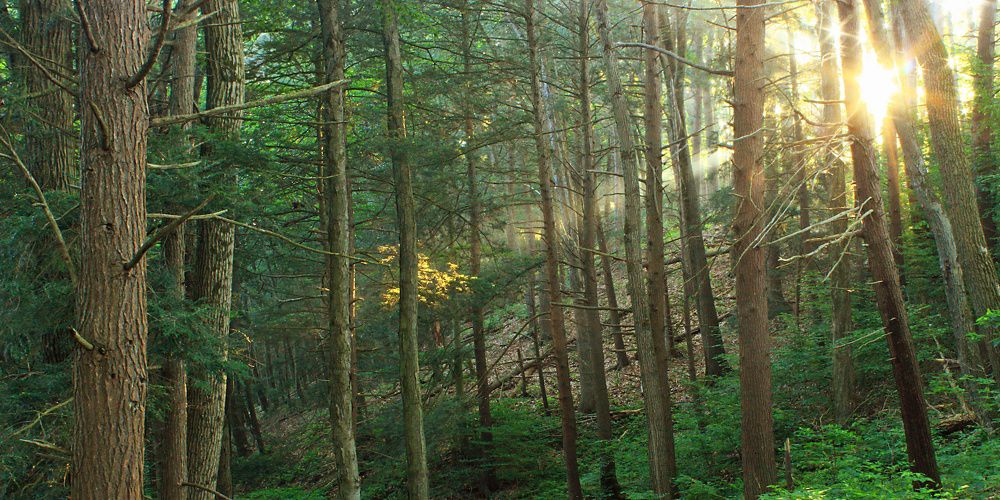
Restoration
Utilizing the expertise and relationships our land stewards possess to restore and increase biodiversity within our priority landscapes.
Restoration efforts are ongoing at our preserves across Pennsylvania. Over the past few years, TNC in Pennsylvania has led several restoration projects to improve the lands and waters of our great state. From ridgetop reforestation to stream revivals to the removal of invasive species, this work is helping educate and inspire our partners, supporters, visitors and local communities.

Invasive Species Removal
A major threat to healthy forests is invasive species, which have been degrading forest cover at several nature preserves, including the Hamer Woodlands at Cove Mountain. At Cove Mountain, invasive species threaten to create a weak link in this critical chain of migratory habitat. However, we have partnered with Audubon Mid-Atlantic on a proactive restoration project due to the high value of improved ridgetop landscapes.
Our stewardship team along with volunteers are working diligently to tackle invaders such as Tree of Heaven, a rapidly growing species native to China, Japanese stilt grass and mile-a-minute.
The restored sections of ridgetop at the Hamer Woodlands at Cove Mountain Preserve—and the entire Kittatinny Ridge of which it is a part—will continue to provide life-sustaining benefits to both people and nature in the decades and centuries ahead.
Explore
The Hamer Woodlands at Cove Mountain
Learn more about how we are working at our Cove Mountain Preserve to create a more connected, healthy and climate-resilient forest.
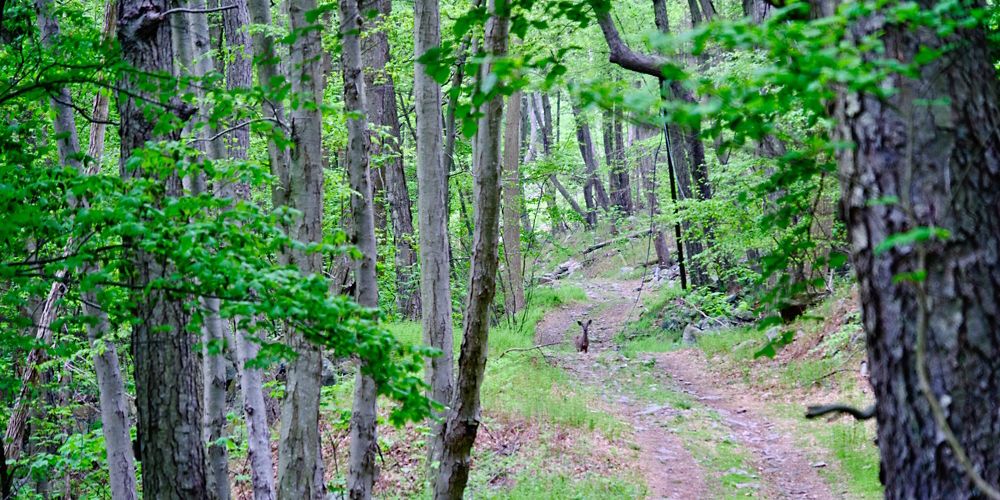
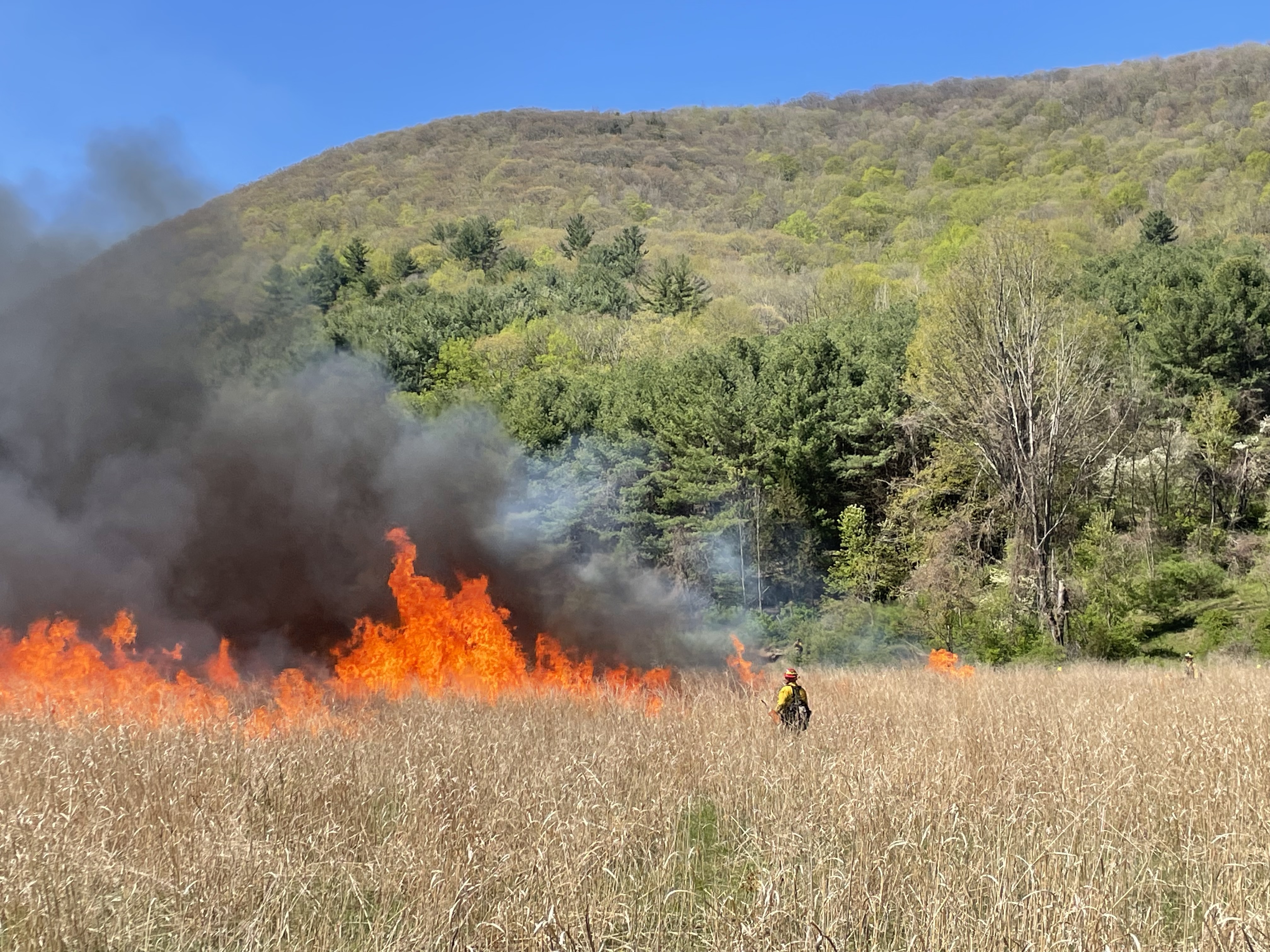
Prescribed Fire
Prescribed fires are a proven way to restore our forests. By managing the natural process of fire on the landscape instead of preventing it, we can improve habitats for native plants and animals and reduce the risk of out-of-control wildfires.
Many species of plants and trees have evolved to be fire-adapted and may not grow or disperse their seeds until after a forest has burned. With natural wildfires suppressed for so long, rare plants and animals that depend on periodic fires could disappear. This is why we are working to bring fire to fire-dependent places like our Long Pond Barrens Preserve.
Using fire in the right places and at the right times can mitigate dry conditions and enhance healthy forests that attract diverse wildlife, support local livelihoods and help reduce threats to public safety.
Dive Deeper
The Power of Fire
Fire is a critical resource for resilient lands. Learn more about how and why we work with fire.
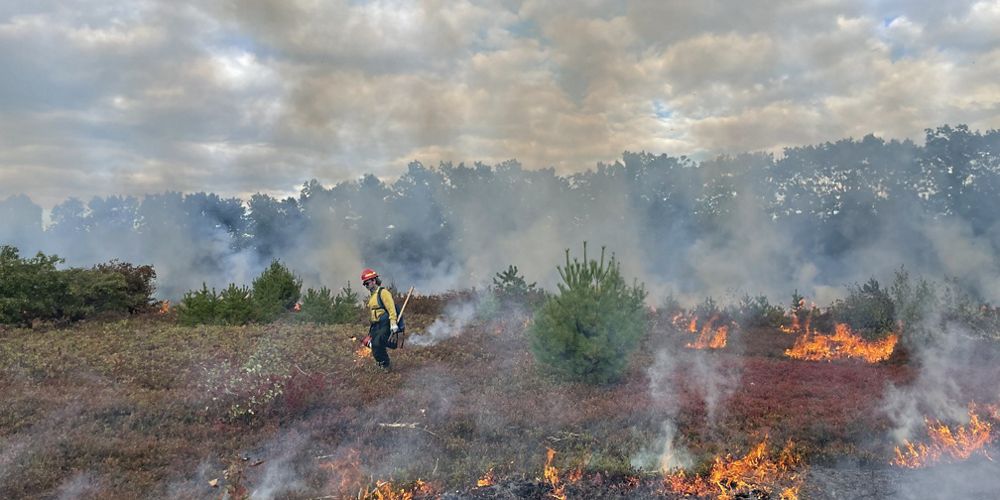

Learn More
Restoration Projects
Dive deeper and learn more about ongoing and recently completed restoration projects across our preserves in Pennsylvania.
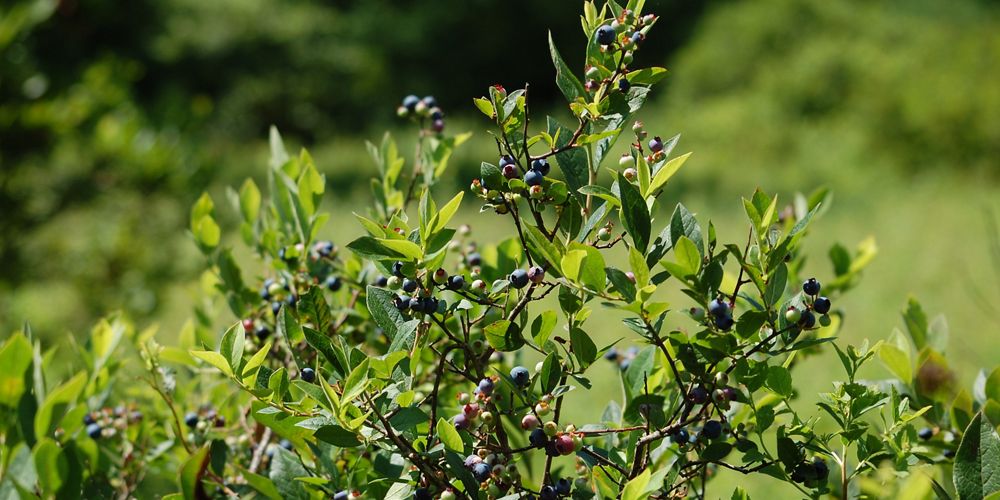
Collaboration
Working with state and federal agencies, local land trusts and partners to drive conservation actions well beyond the borders of our lands.
Our conservation impact is magnified when we work together. TNC works with other land managers to enhance our shared capacity for tangible, lasting results. In Pennsylvania, we frequently assist partners with the purchase of lands that become public lands and forests and we share tools such as our resilient connected network map to help partners plan their land protection efforts. Once the land is protected, we work with the partners to support them in their continued management of the property for biodiversity and resiliency.
Our Recent Land Purchase and Transfer Assists
.jpg)
78 Acres in Cherry Valley
Parcel transferred to the U.S. Fish and Wildlife Service (USFWS) for addition to the Cherry Valley National Wildlife Refuge.
Read More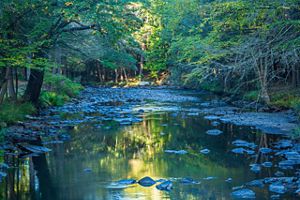
130 Acres in the Shohola Creek Watershed
Parcel transferred to the Pennsylvania Game Commission (PGC) for addition to State Game Land 116.
Read More
240 Acres in Luzerne County
Parcel transferred to the PGC for addition to State Game Land 91.
Read MoreThink Global, Act Local
Get global conservation news & the latest on local opportunities & projects.
